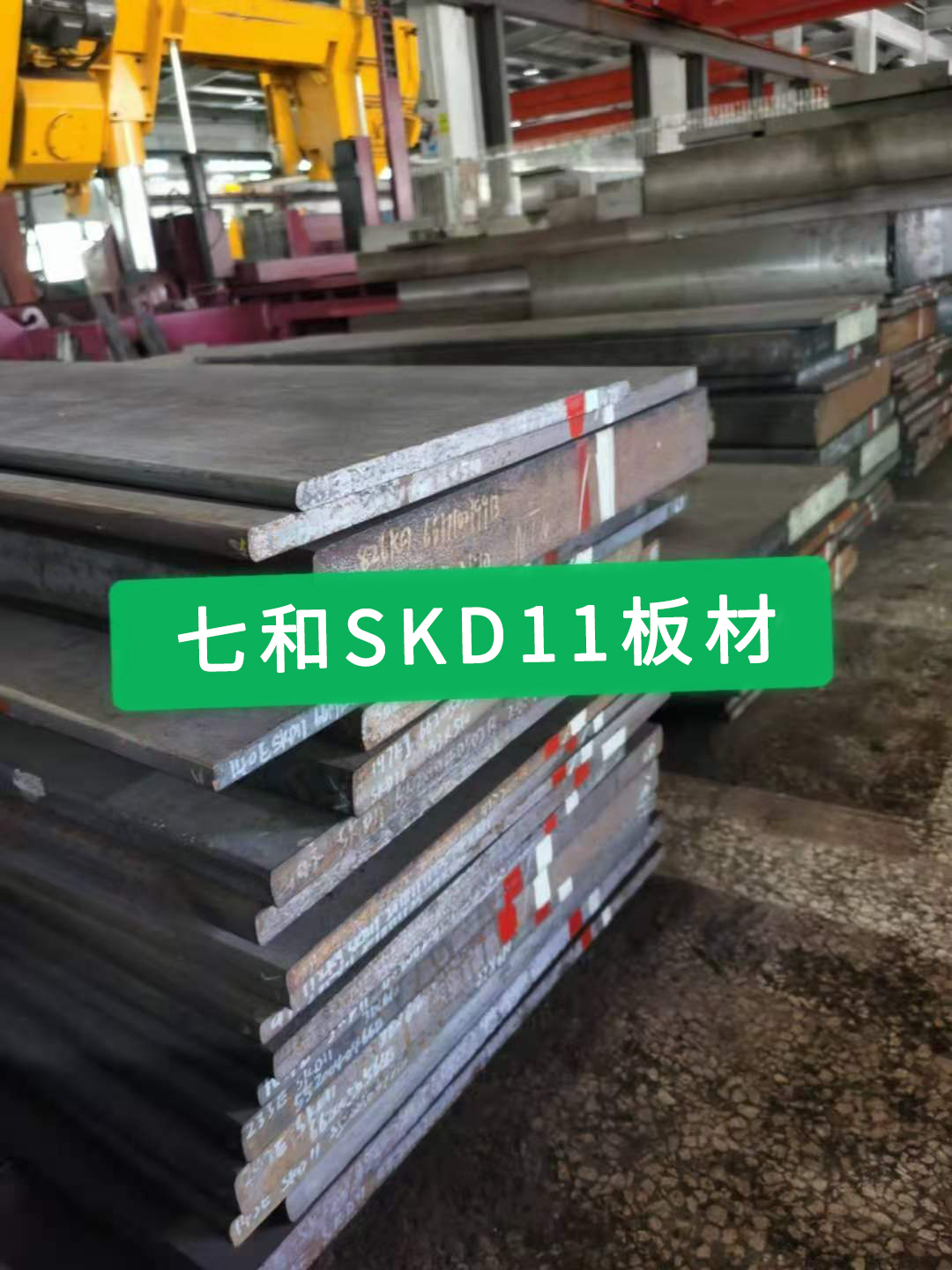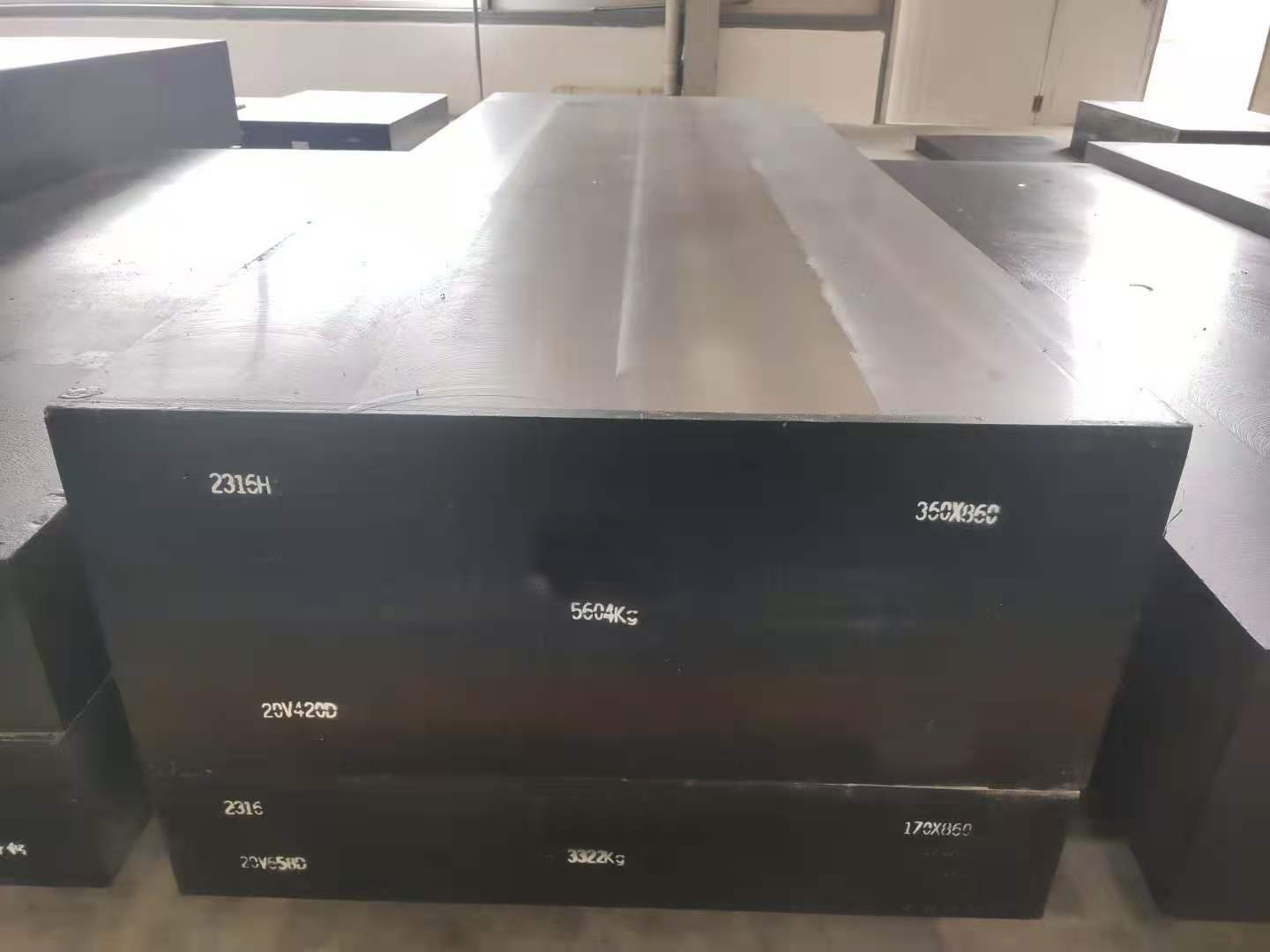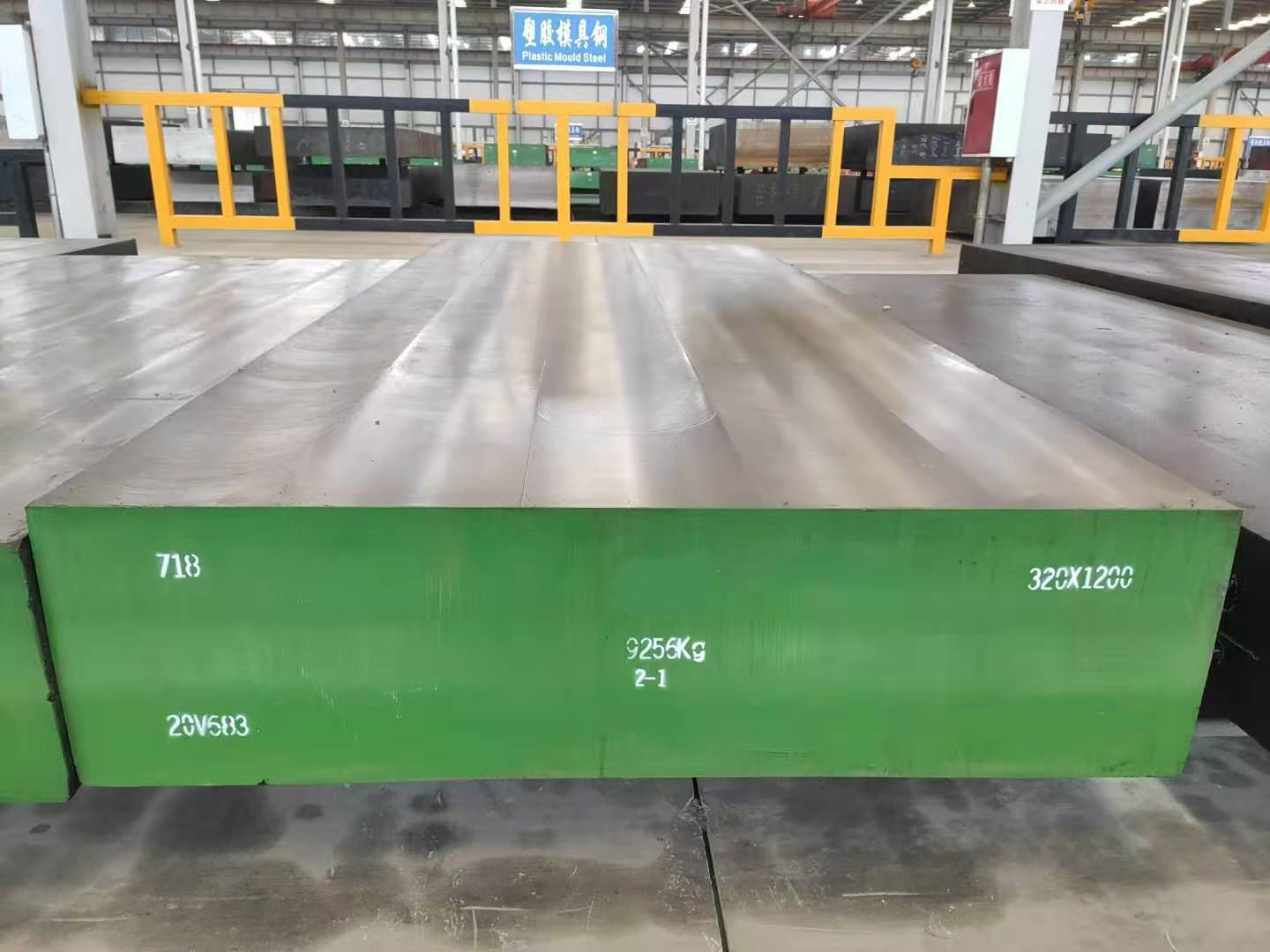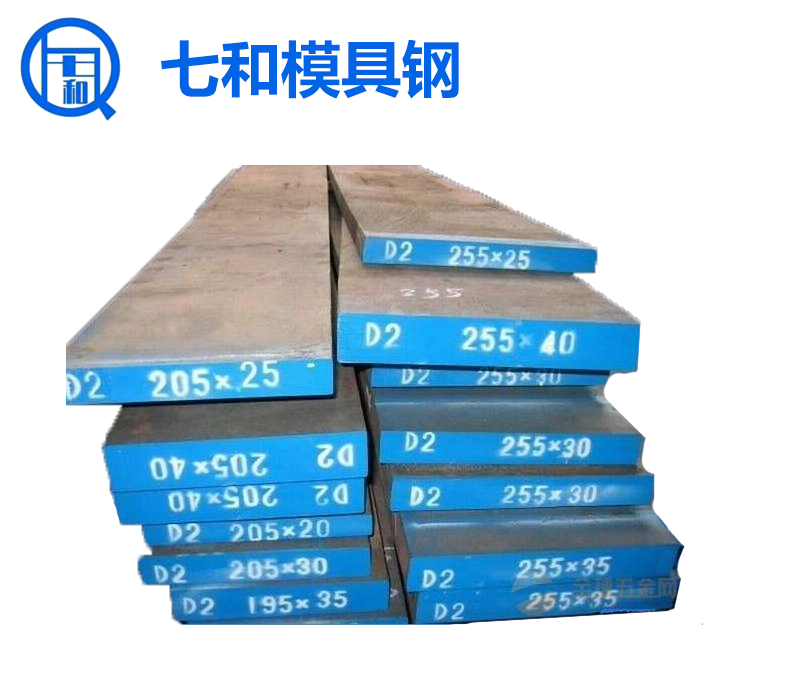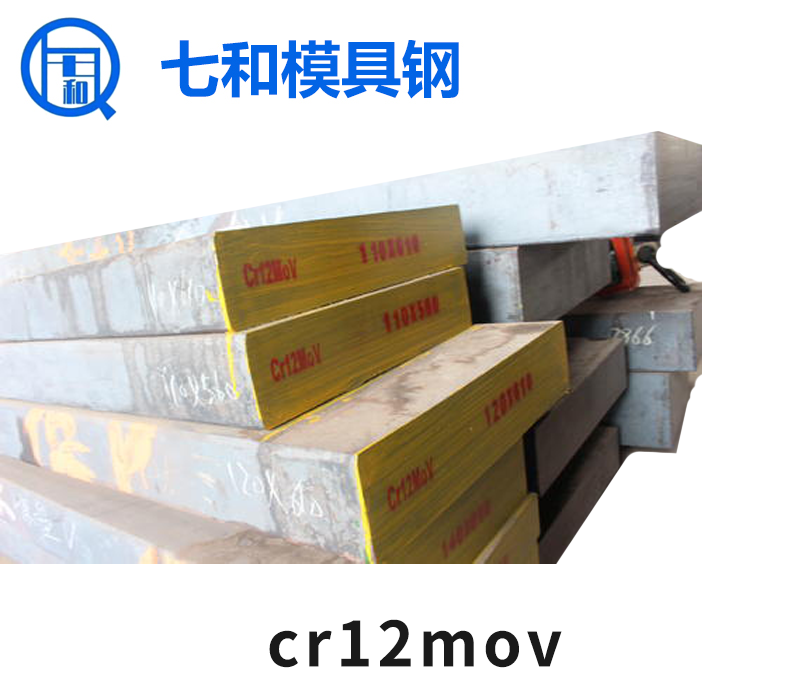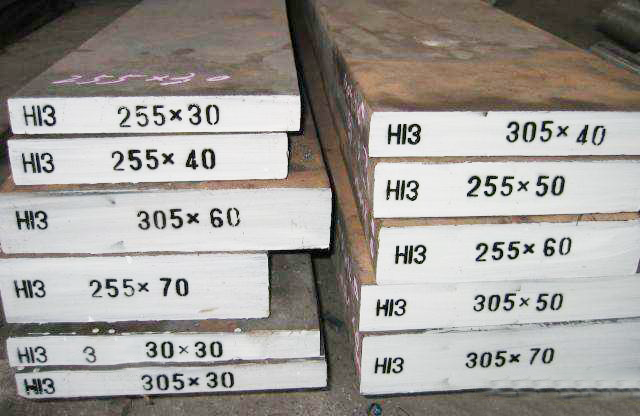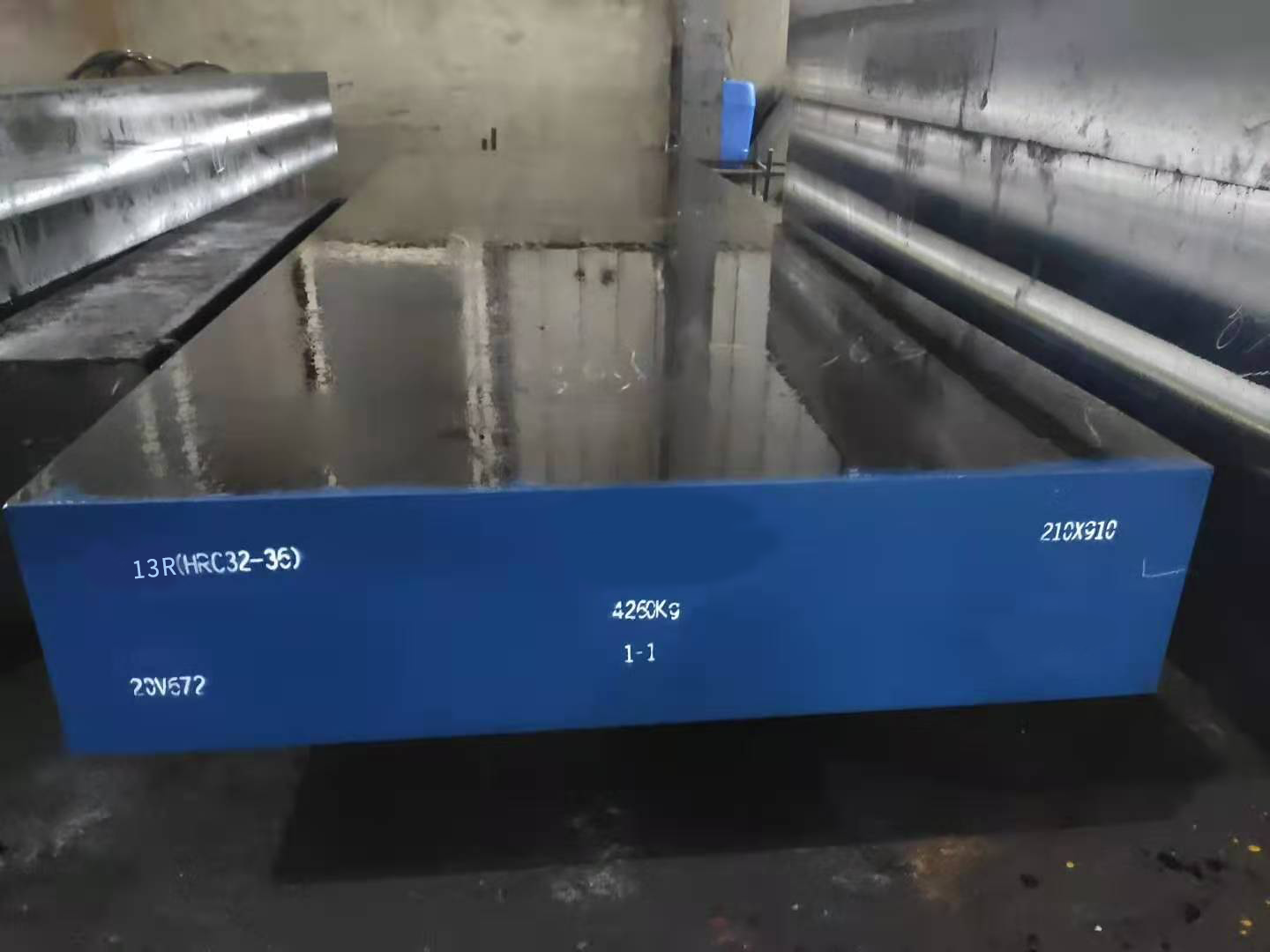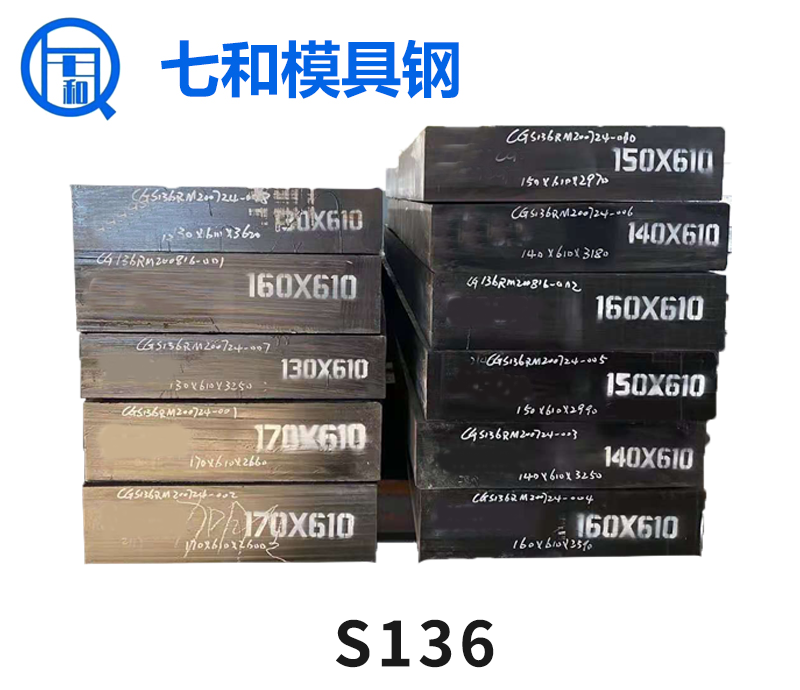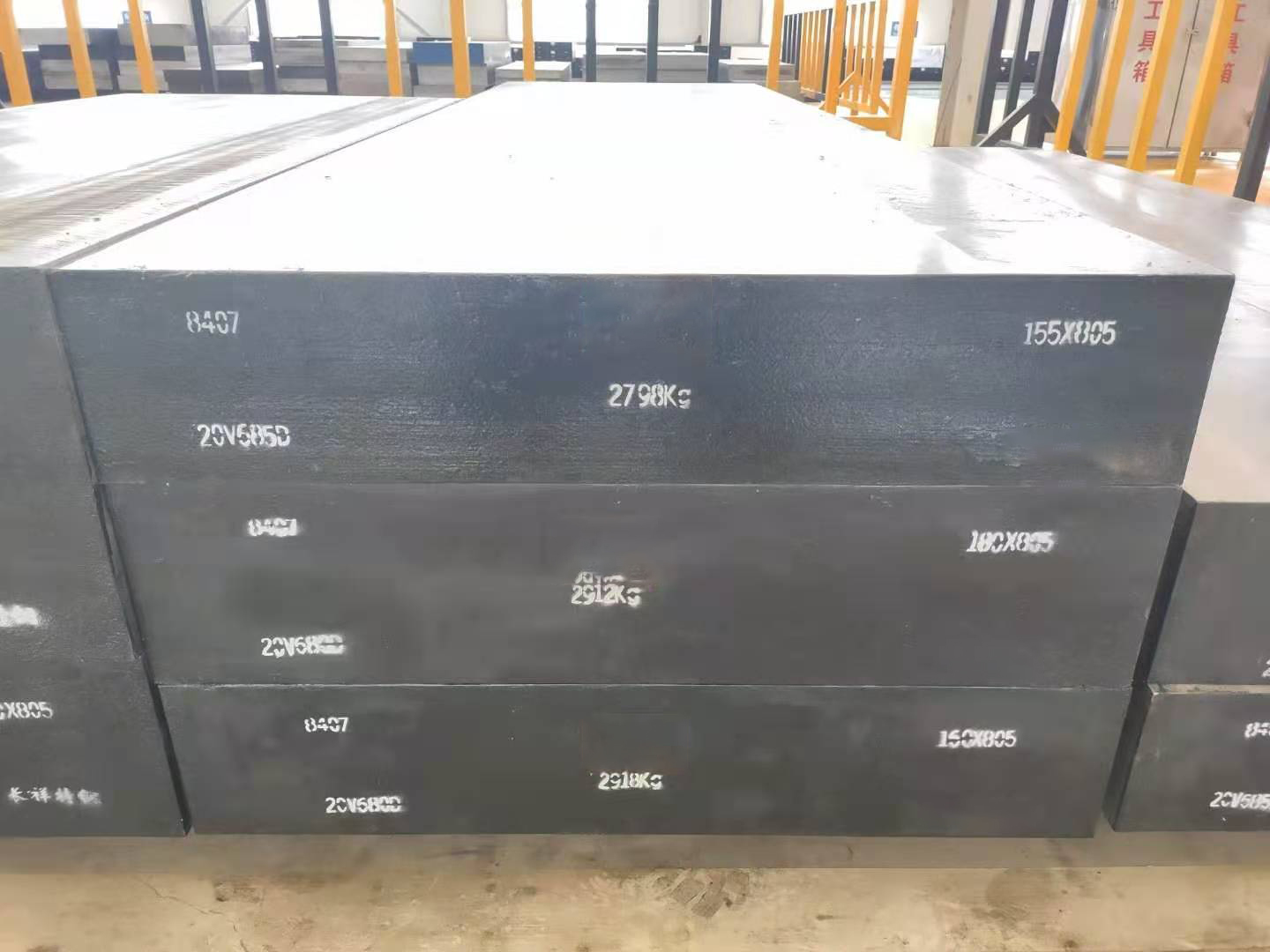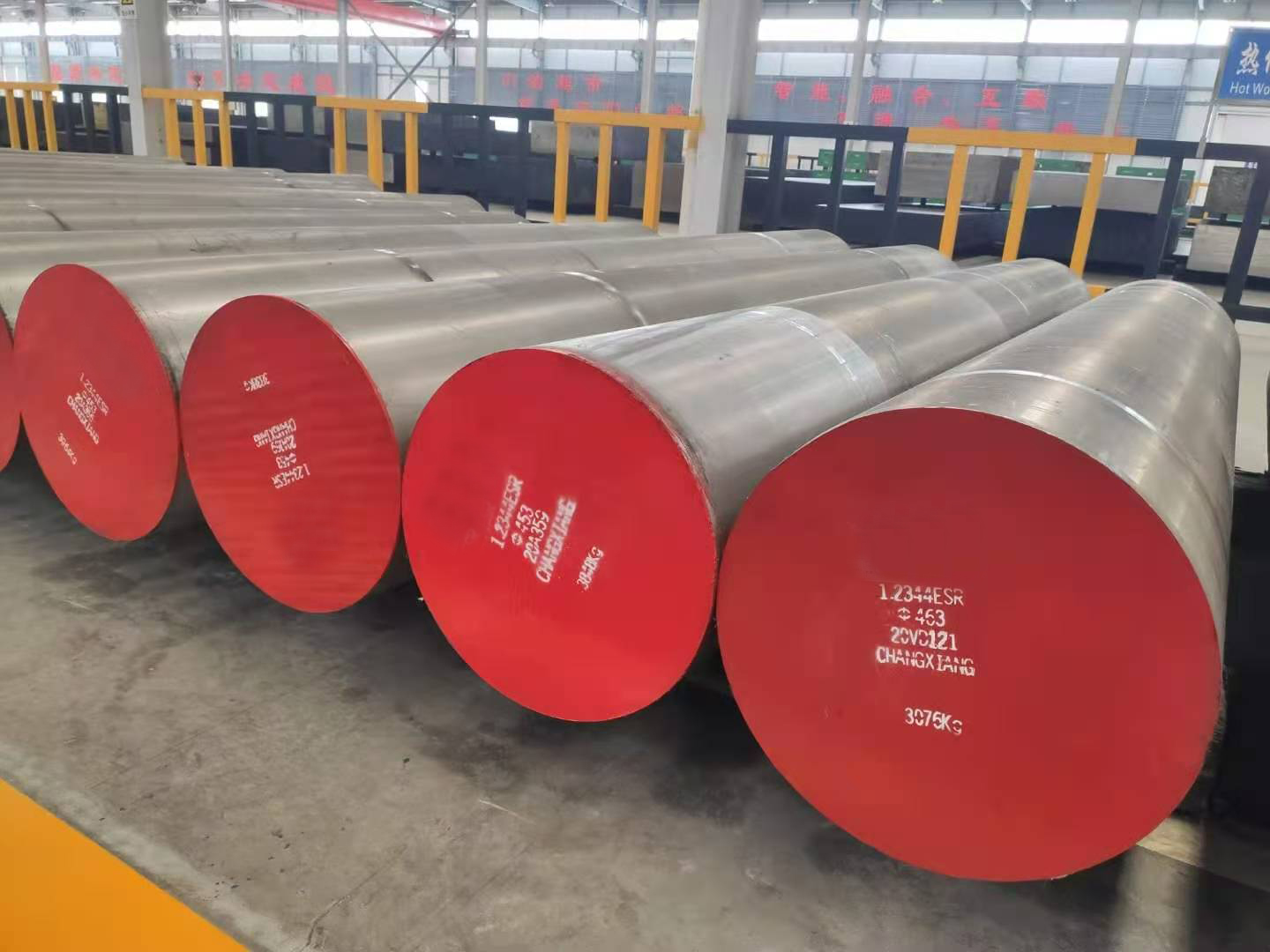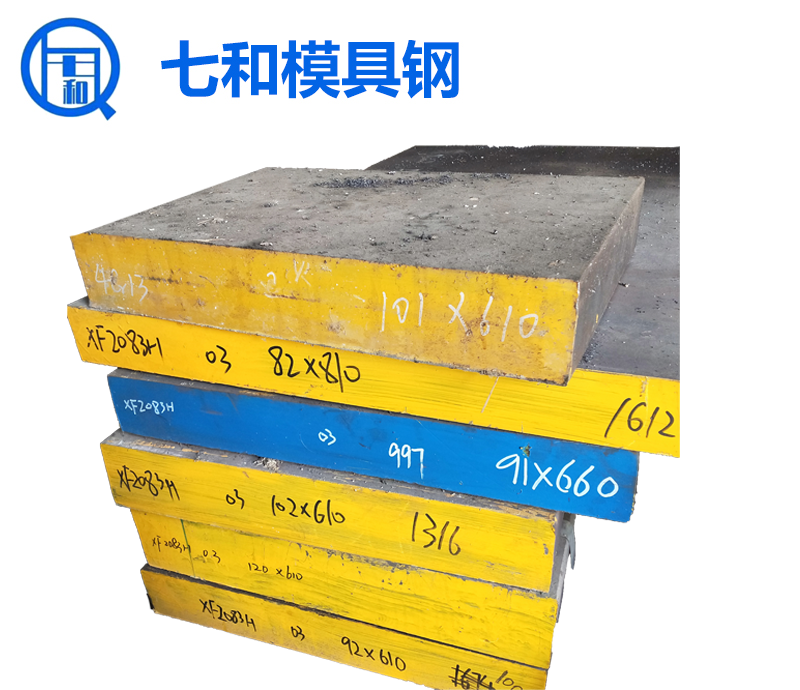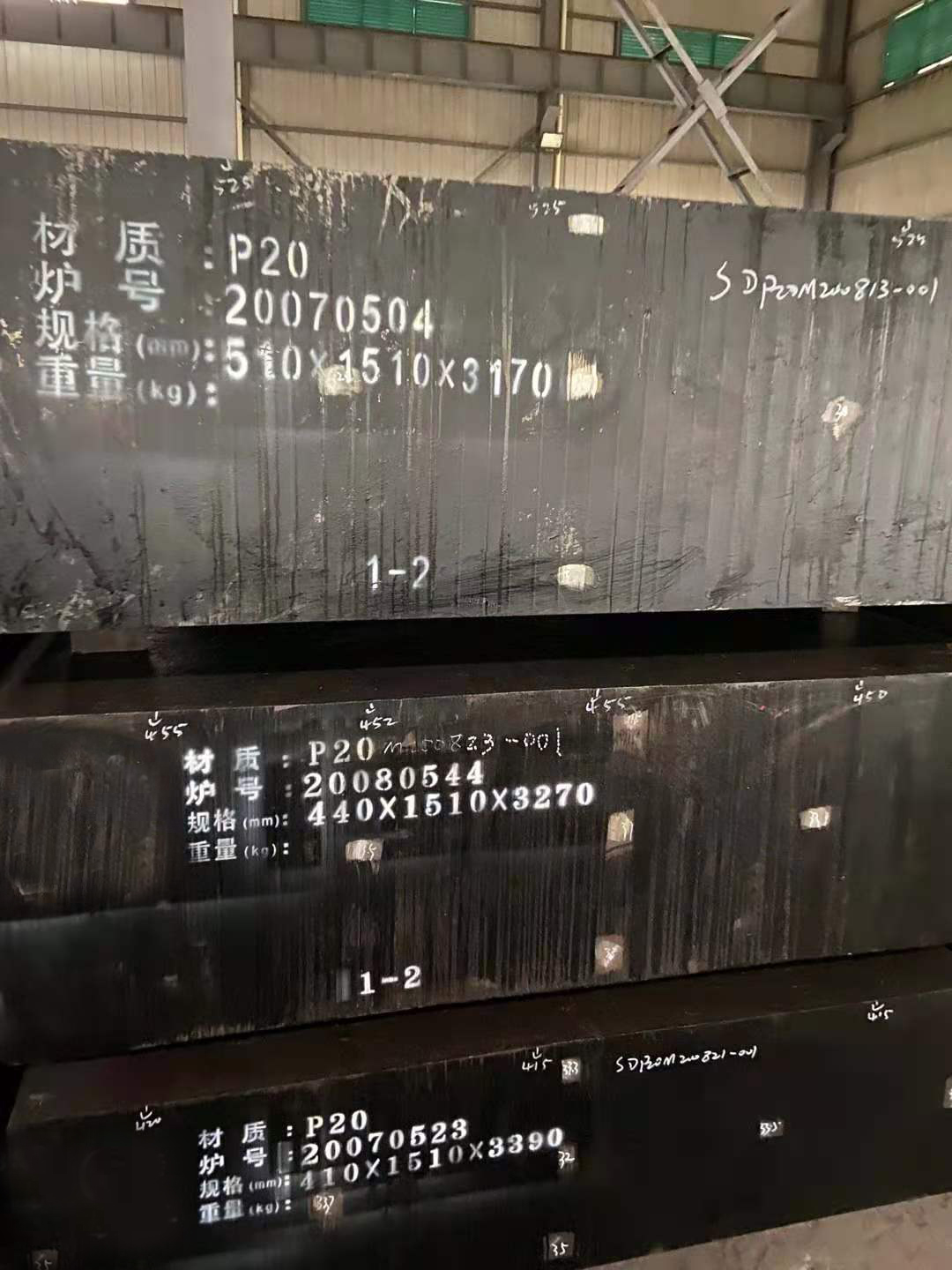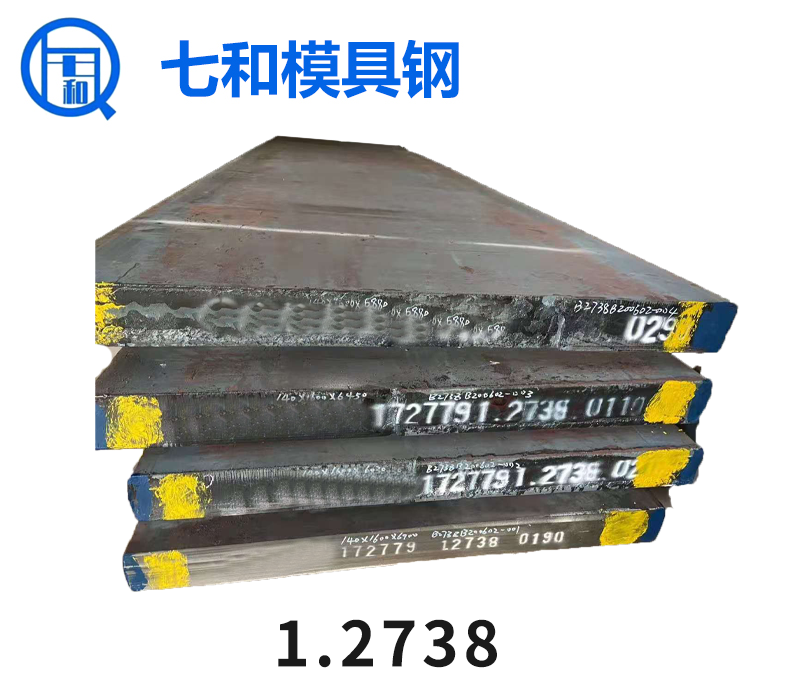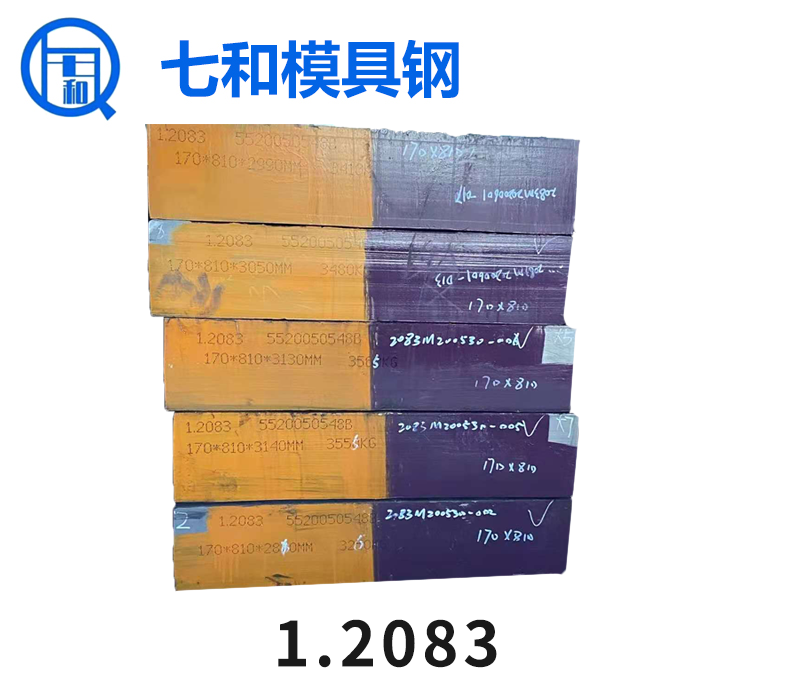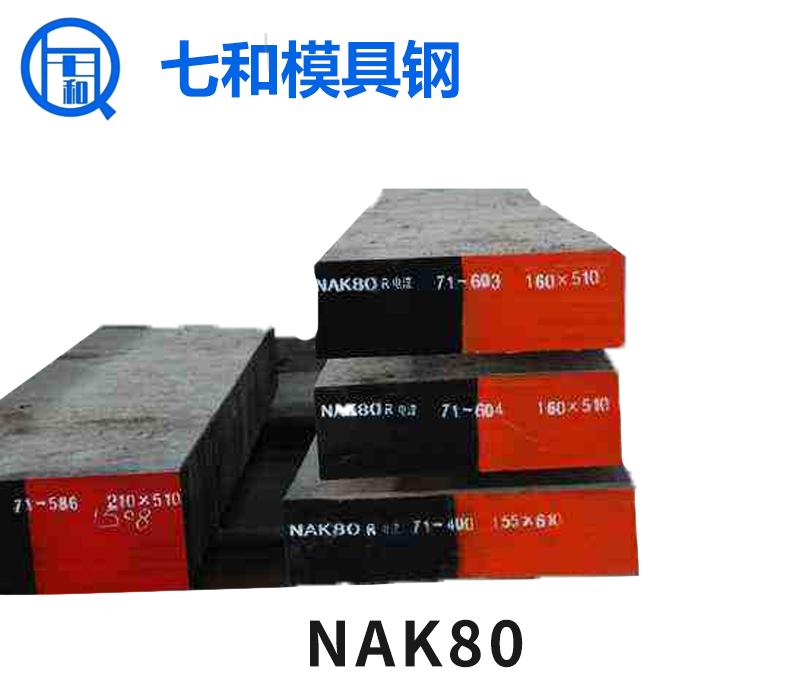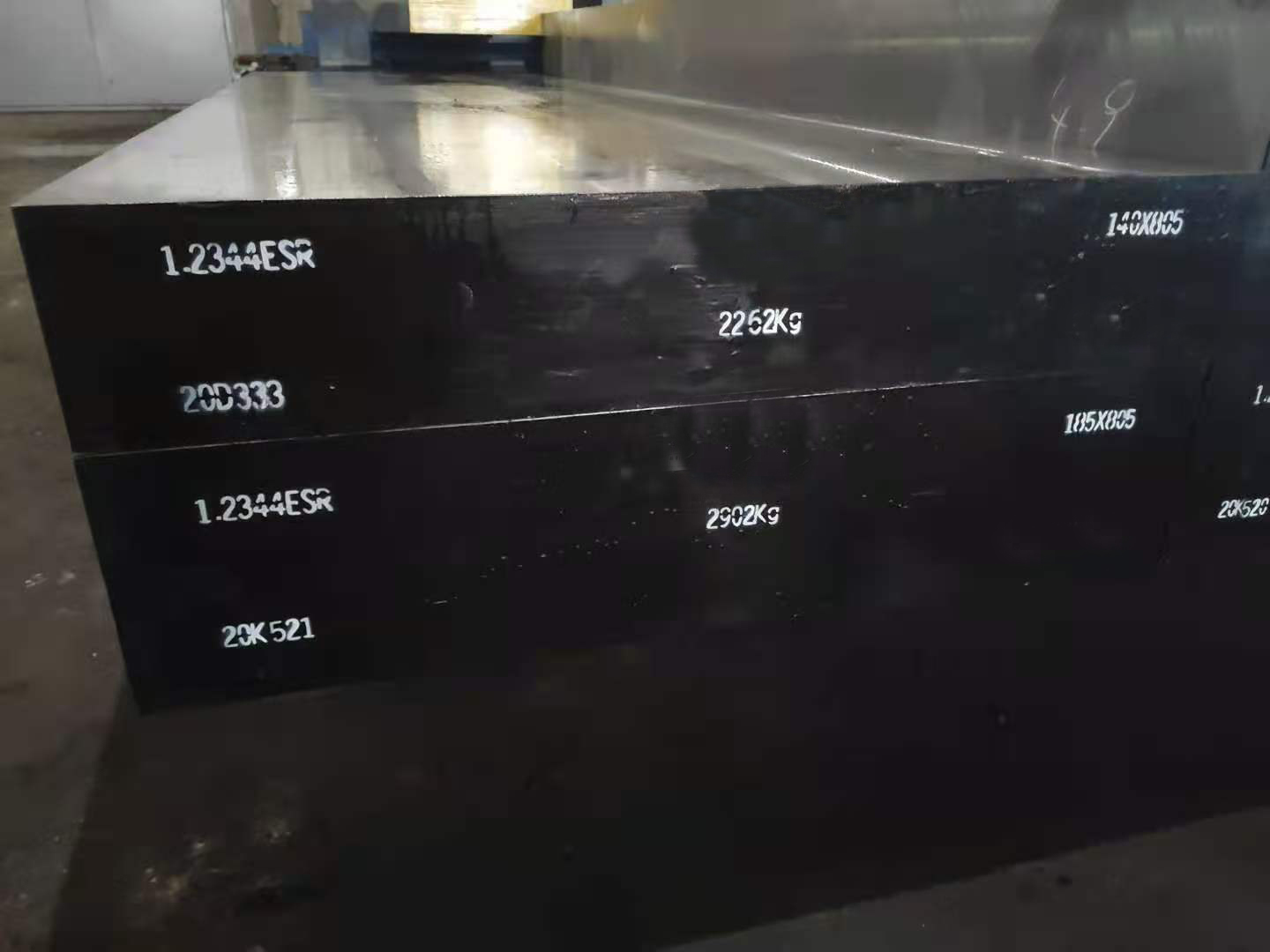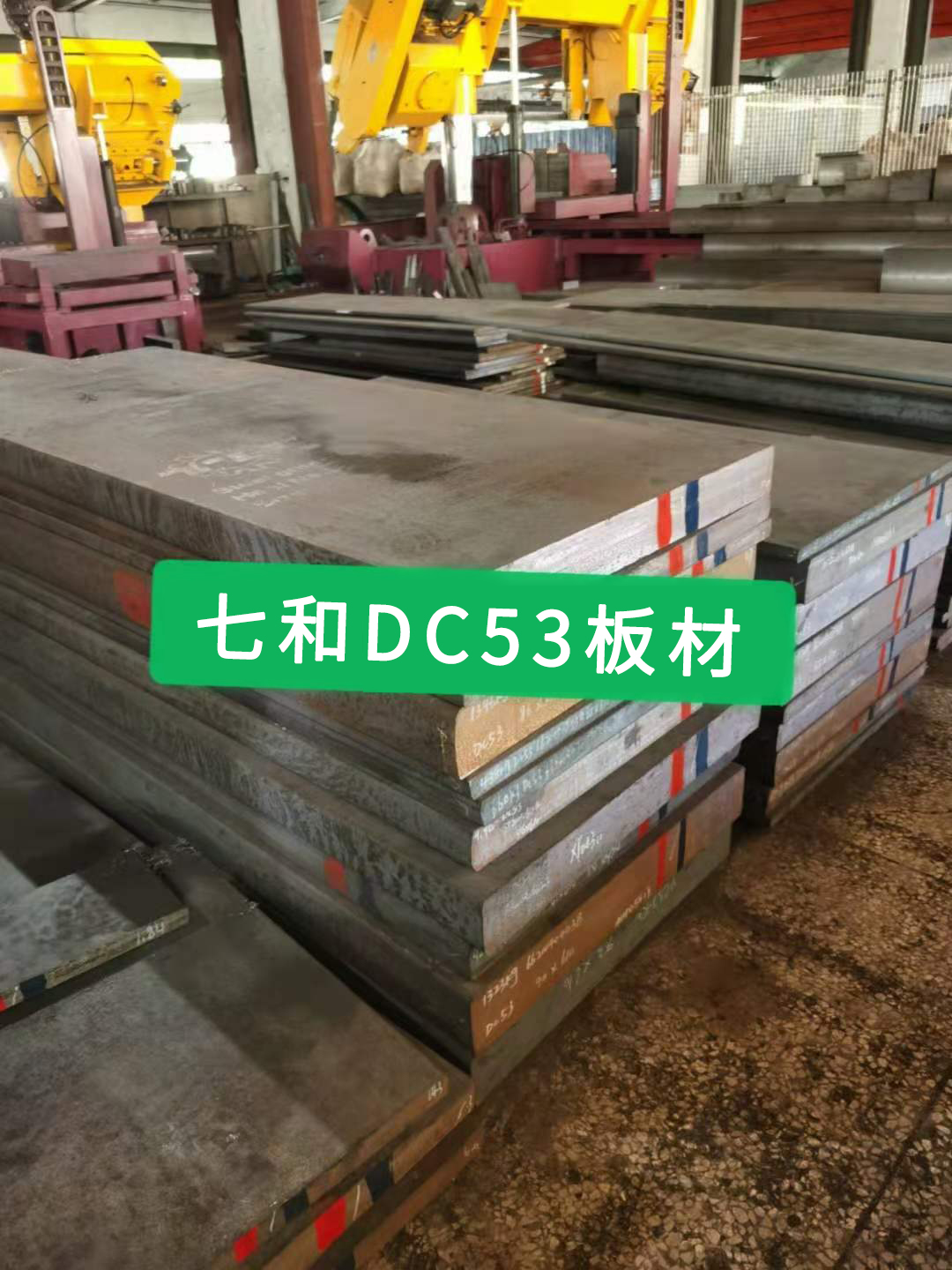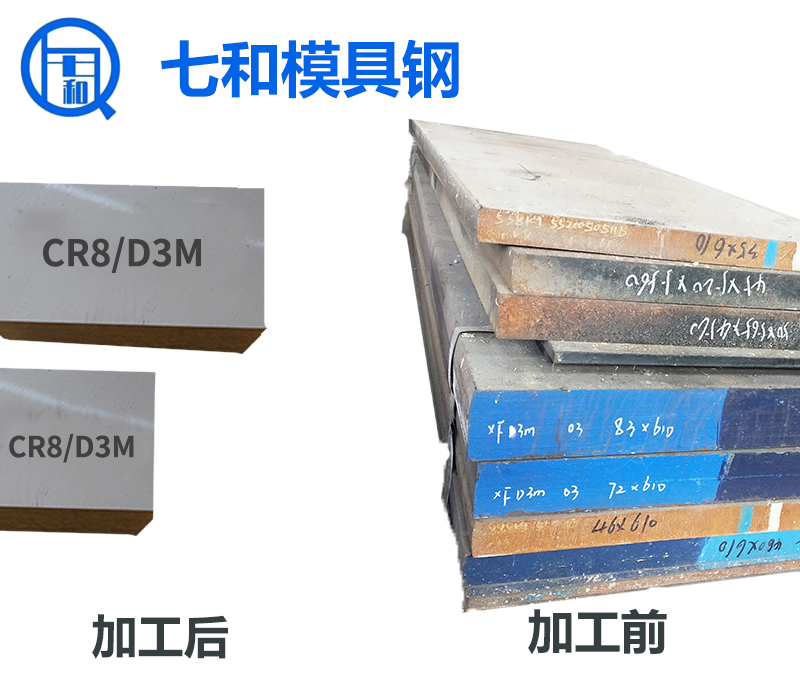冷作模具钢主要用于制造在冷状态(室温)下工件压制成型的模具。如冷冲压模具﹑冷拉伸模具﹑冷挤压模具等。
Cold working die steel is mainly used to manufacture the die for pressing workpiece in cold state (room temperature). Such as cold stamping die, cold drawing die, cold extrusion die, etc.
1、冷作模具钢工作条件
1. Working conditions of cold working die steel
冷作模具钢在工作时。由于冷作模具钢被加工材料的变形抗力比较大,模具的工作部分承受很大的压力、弯曲力、冲击力及摩擦力。因此,冷作模具钢的正常报废原因一般是磨损。也有因断裂、崩力和变形超差而提前失效的。
Cold working die steel is working. Due to the large deformation resistance of the material processed by cold working die steel, the working part of the die bears a lot of pressure, bending force, impact force and friction force. Therefore, the normal reason for scrapping cold working die steel is wear. There are also early failure due to fracture, collapse force and deformation out of tolerance.
2、冷作模具钢失效分析
2. Failure analysis of cold working die steel
(1)磨损(2)崩角(3)塑性变形 (4)破裂(5)粘着
(1) Wear (2) collapse angle (3) plastic deformation (4) fracture (5) adhesion
3、冷作模具钢性能要求
3. Performance requirements of cold working die steel
(1)良好的耐磨性﹐工作时保持锋利的刃口﹔
(1) Good wear resistance, keep sharp edge when working
冷作模具在工作时,表面与坯料之间产生许多次摩擦,模具在这种情况下必须仍能保持较低的表面粗糙度值和较高的尺寸精度,以防止早期失效。
There are many times of friction between the surface and the blank of the cold working die. In this case, the die must still be able to maintain a low surface roughness and high dimensional accuracy to prevent early failure.
由于模具材料的硬度和组织是影响模具耐磨性能的重要因素,因此为了提高冷作模具的抗磨性能,通常要求模具硬度高于加工件硬度30%——50%,材料的组织为回火马氏体或下贝氏体,其上分布均匀、细小的颗粒状碳化物。要达到此目的,钢中的碳的质量分数一般都在0.60%以上。
As the hardness and structure of die material are important factors affecting the wear resistance of die, in order to improve the anti-wear performance of cold working die, the hardness of die is usually required to be 30% - 50% higher than that of the workpiece. The structure of the material is tempered martensite or lower bainite, on which uniform and fine granular carbides are distributed. To achieve this goal, the mass fraction of carbon in steel is generally above 0.60%.
(2)淬火态有较高的硬度和一定的淬透深度﹔
(2) As quenched, it has higher hardness and certain depth of quenching
(3) 热处理变形小﹐复杂形状不易开裂﹔
(3) Heat treatment deformation is small, complex shape is not easy to crack
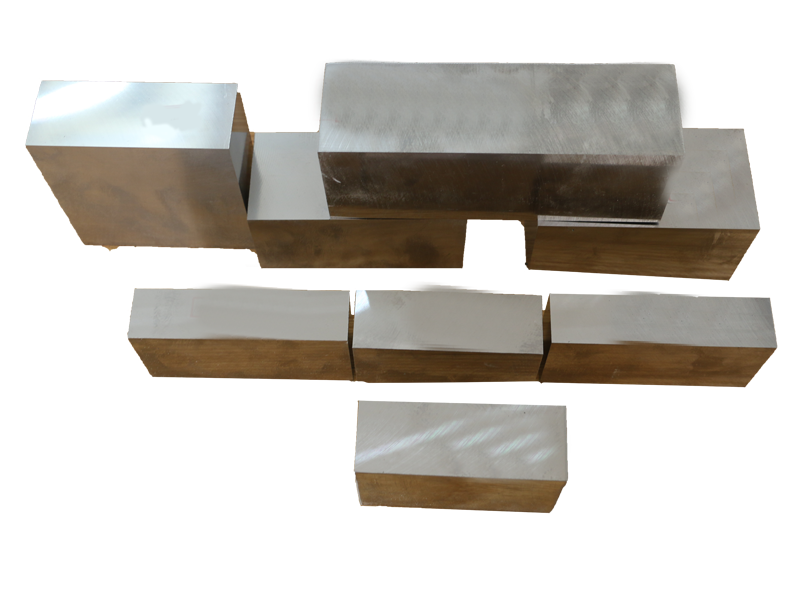

(4) 一定的强度和韧性﹔
(4) Certain strength and toughness
模具的强度是指模具零件在工作过程中抵抗变形和断裂的能力。强度指标是冷作模具设计和材料选择的重要依据,主要包括拉伸屈服点、压缩屈服点等。屈服点是衡量模具零件塑性变形抗力的指标,也是常用的强度指标。
The strength of die refers to the ability to resist deformation and fracture of die parts in the working process. Strength index is an important basis for cold working die design and material selection, including tensile yield point, compression yield point, etc. Yield point is an index to measure the plastic deformation resistance of die parts, and is also a commonly used strength index.
为了获得高的强度,在模具制造过程中,要模具材料的韧性,要根据模具工作条件来决定,对于强烈冲击载荷的模具,如冷作模具的凸模、冷镦模具等,因受冲击载荷较大,需要高的韧性。对于一般工作条件下的冷作模具,通常受到的是小能量多次冲击载荷的作用,模具的失效形式是疲劳断裂,因此模具不必具有过高的冲击韧度值。
In order to obtain high strength, the toughness of the die material should be determined according to the working conditions of the die in the process of die manufacturing. For dies with strong impact load, such as punch of cold working die and cold upsetting die, high toughness is required due to large impact load. For cold working dies under general working conditions, they are usually subjected to repeated impact loads with small energy. The failure mode of the dies is fatigue fracture, so the dies need not have high impact toughness.
(5)较好的红硬性及受热软化能力
(5) Good red hardness & thermal softening ability
受热软化能力反映了冷作模具钢在承载时温升对硬度、变形抗力及耐磨性的影响。表征冷作模具钢受热软化抗力的指标主要有软化温度(℃)和二次硬化硬度(HRC)。
The thermal softening ability reflects the influence of temperature rise on hardness, deformation resistance and wear resistance of cold working die steel under load. Softening temperature (℃) and secondary hardening hardness (HRC) are the main indexes to characterize the thermal softening resistance of cold working die steel.
(7)较强的抗咬合性
(7) The occlusal resistance is strong
咬合抗力实际就是对发生“冷焊”的抵抗能力。通常在干摩擦条件下,把被试验模具钢试样,与具有咬合倾向的材料(如奥氏体钢),进行恒速对偶摩擦运动,以一定速度逐渐增大载荷,此时转矩也相应增大。当载荷加大到某一临界值时,转矩突然急剧增大,这意味着发生咬合,这一载荷称为“咬合临界载荷”。临界载荷越高,标志着咬合抗力越强。
Bite resistance is actually the resistance to cold welding. In general, under dry friction condition, the test die steel sample is subjected to constant speed dual friction motion with materials with bite tendency (such as austenitic steel), and the load is gradually increased at a certain speed, and the torque is also increased accordingly. When the load increases to a certain critical value, the torque suddenly increases sharply, which means that a bite occurs. This load is called "critical load of bite". The higher the critical load, the stronger the bite resistance.
4、冷作模具钢的工艺性能要求
4. Technological performance requirements of cold working die steel
冷作模具钢的工艺性能,直接关系到模具的制造周期及制造成本。对冷作模具钢的工艺性能要求,主要有锻造工艺性、切削工艺性、热处理工艺性等。
The technological performance of cold working die steel is directly related to the manufacturing cycle and cost of die. The technological properties of cold working die steel mainly include forging, cutting and heat treatment.
(1)锻造工艺性
(1) Forging process
锻造不仅减少了模具材料的机械加工余量,节约钢材,而且改善模具材料的内部缺陷,如碳化物偏析、减少有害杂质、改善钢的组织状态等。
Forging not only reduces the machining allowance of die material and saves steel, but also improves the internal defects of die material, such as carbide segregation, reducing harmful impurities and improving the microstructure of steel.
为了获得良好的锻造质量,对可锻性的要求是热锻变形抗力低、塑性好、锻造温度范围宽,锻裂、冷裂及析出网状碳化物倾向小。
In order to obtain good forging quality, the requirements for the forgeability are low deformation resistance, good plasticity, wide forging temperature range, and low tendency of forging crack, cold crack and precipitation of network carbide.
(2)切削工艺性
(2) Machinability
磨损小以及加工后模具表面光洁。冷作模具钢主要属于过共析钢和莱氏体钢,大多数切削加工都较困难,为了获得良好的切削加工性,需要正确进行热处理,对于表面质量要求较高的模具可选用含S、Ca等元素的易切削模具钢。
The wear is small and the surface of the die is smooth after processing. Cold working die steel mainly belongs to hypereutectoid steel and ledeburite steel, most of which are difficult to be machined. In order to obtain good machinability, proper heat treatment is required. For dies with high surface quality requirements, free cutting die steels containing elements such as s and Ca can be selected.
(3)热处理工艺性
(3) Heat treatment process
热处理工艺性主要包括:淬透性、淬硬性、耐回火性、过热敏感性、氧化脱碳倾向、淬火变形和开裂倾向等。
Heat treatment process mainly includes: hardenability, hardenability, tempering resistance, overheating sensitivity, oxidation decarburization tendency, quenching deformation and cracking tendency.
上一条:
你知道冷作模具钢的失效形式吗?
下一条:
冷作模具钢应具备哪些特性
